Essential car maintenance for your first car
There are some essential maintenance items and warnings you’ll need to know when you take ownership of your first car.
If your car didn’t come with a manual we suggest you find one either by downloading it off the internet (many are available for free), or buying one new or secondhand (again, try the internet). This will give you the specific settings in your car for tyre pressures, oil type, etc.
Oil
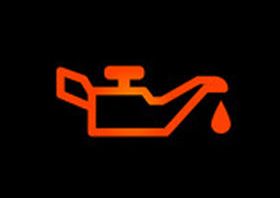 Warning: the oil warning light will come on if you are dangerously low on oil. If it does come on, you need to stop the car immediately unless it’s unsafe to do so. Continuing to drive means your engine is not getting enough lubrication and you could cause it to seize up. Other reasons for the light to come on could be a blocked filter strainer in the sump or the oil pump has broken.
Warning: the oil warning light will come on if you are dangerously low on oil. If it does come on, you need to stop the car immediately unless it’s unsafe to do so. Continuing to drive means your engine is not getting enough lubrication and you could cause it to seize up. Other reasons for the light to come on could be a blocked filter strainer in the sump or the oil pump has broken.
Maintenance: check your oil ever one or two months. You can do this easily at home and it’s best done when the engine is cold. Simply open the bonnet, look for the oil dipstick (this is often coloured yellow or red and has an image of an oil can on it), pull out the dipstick and wipe it with a cloth. Put the dipstick back in, then pull it out again and check the oil level is between the minimum and maximum levels. Put the dipstick back in. If you need to add oil, there will be an oil cap usually near the top of the engine. Purchase the right type of oil (this is important), and add a little. Don’t add too much as the level between low and enough is not litres of oil. You don’t want to overfill your engine with oil because that’s not good either.
Fuel
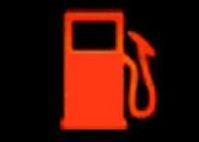 Warning: the low fuel light will come on usually around 50km before you are about to run out, but this will vary depending on the car you have. It is a warning that you should put more fuel in because drawing petrol from a near-empty tank means you could be sucking up some of the muck that settles in the bottom of the tank. If your car starts cutting out then you are most likely almost out of fuel. You might be able to get a little further by steering side-to-side to slosh the remaining petrol around. You are now likely to be clogging your fuel filter.
Warning: the low fuel light will come on usually around 50km before you are about to run out, but this will vary depending on the car you have. It is a warning that you should put more fuel in because drawing petrol from a near-empty tank means you could be sucking up some of the muck that settles in the bottom of the tank. If your car starts cutting out then you are most likely almost out of fuel. You might be able to get a little further by steering side-to-side to slosh the remaining petrol around. You are now likely to be clogging your fuel filter.
Maintenance: change your fuel filter as frequently as suggested in your owner’s manual. Always use the right type of fuel, e.g never use diesel in a petrol engine and vice versa, and don’t use fuel that has an octane rating that’s too low as it will cause detonation problems and ‘pinking’ which is damaging to your engine. For example, if your vehicle handbook recommends 95RON petrol, then it’s OK to use 95 or 98, but not 91.
Cooling system
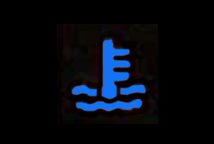 Warning: the coolant light will come on if you are low on coolant, or you might see the temperature gauge rising too high or changing colour to red if there is something wrong with the cooling system or radiator. In any of these cases you will need to stop before your engine overheats as this will cause an expensive repair. If the temperature remains cold, or blue (like the image), that could indicate other problems, too, such as a faulty sensor.
Warning: the coolant light will come on if you are low on coolant, or you might see the temperature gauge rising too high or changing colour to red if there is something wrong with the cooling system or radiator. In any of these cases you will need to stop before your engine overheats as this will cause an expensive repair. If the temperature remains cold, or blue (like the image), that could indicate other problems, too, such as a faulty sensor.
Maintenance: keep the coolant levels topped up. There’s usually a transparent reservoir with a marking on it under the bonnet. The coolant fluid is often coloured brightly – orange, green or red. Check your radiator doesn’t have any damage – damage can be caused by stoned being flung into it. Never open your radiator while your car is hot. If you have an older car you may need to replace coolant hoses periodically. The other thing that can go wrong with the cooling system is a snapped fan belt. Often a fan belt will give some warning that it is expiring by squealing when you start to move away. This is the fan belt slipping.
Tyres
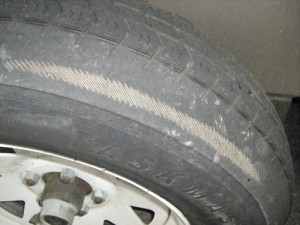 Warning: the tyres look like they are wearing unevenly, e.g. on one side or in the middle, especially if you can see the canvas through the rubber.
Warning: the tyres look like they are wearing unevenly, e.g. on one side or in the middle, especially if you can see the canvas through the rubber.
Maintenance: uneven wear is almost always either a problem with over- or under-inflation, or wheel alignment. If your wheels are misaligned, the car will pull strongly to one side. Usually the wheels are aligned to pull your car gently to the left, and this is for safety purposes: if you fall asleep at the wheel this will steer you off the left of the road which in theory is less dangerous than steering you into oncoming traffic. If the tyre inflation is incorrect it can cause handling problem, particularly in the wet (much less grip if tyres are over-inflated), and it can increase the chance of a puncture or the tyre rolling off the rim if they are under-inflated. Service stations usually have facilities to check your tyre pressure, however, you’ll need to take your car to a wheel alignment specialist to get wheels aligned.
Wheels
Warning: The steering wheel shakes.
Maintenance: If the steering wheel is shaking then one of your wheels is out of balance and you’ll need to go to a wheel aligner to get it rebalanced. This usually happens if one or more of the small weights attached to the wheel comes off.
Lights
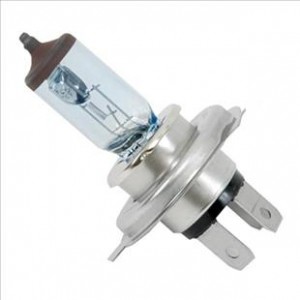 Warnings: one indicator is flashing very quickly, your lights are not bright on high-beam, other drivers flash their lights at you (forward or rear)
Warnings: one indicator is flashing very quickly, your lights are not bright on high-beam, other drivers flash their lights at you (forward or rear)
Maintenance: something is wrong with one or more of the bulbs (i.e. it’s blown), or one of the fuses. If one indicator bulb blows the other indicators will blink very fast. You can usually replace these yourself with a bulb from an automotive store. If your headlights are not bright perhaps a bulb has blown, and headlight bulbs need handling with more care because you can’t touch the bulb’s surface with your skin otherwise it will cause it to crack as it gets hot. Rear bulbs may also need to be replaced as it’s very dangerous to drive without brake lights as someone may run into the back of you.
Other warnings
A knocking from one of the front wheels means you should have someone check the CV joints and bushes. You can drive on this indefinitely (well, until if eventually completely fails), but you should fix it.
If your brake pedal vibrates when you push it, you may have warped or cracked a brake rotor. This can sometimes happen if the brakes have got really hot (on a long downhill where you are using them all the time, especially if towing a large trailer), then you let the car sit in one place before the brakes cool off.
If your brakes squeal when you push the pedal then either you have a stone caught in the calliper, which can often be dislodged simply by driving in reverse then braking, or your brake pads are about to wear out. If the squealing is happening all the time regardless of whether you are braking or not, you have an expired brake pad.
Chipped or cracked windscreens can be easily fixed if it’s only just happened, but are much more difficult to fix if you leave them. Also, the windscreen is always under a small amount of pressure when it’s held in the window frame, and any bump that the car goes over increases this pressure which increases the risk of the crack spreading. Many insurance policies cover crack repair for free.
If your engine races ahead but you don’t seem to be making any progress it’s likely your clutch is slipping.
Other maintenance
Keep your windscreen washer bottle topped up, especially in winter when you will get more dirt on your windscreen.
What should you do right now?
Get your car serviced regularly. Most cars will need a service somewhere between 5000km (e.g. older highly strung cars like Ferraris) to 15000km (quite new Japanese and European cars), or every 6-12 months if you don’t do that many kilometres per year.
Set some diary reminders every 4-8 weeks so that you can do your basic maintenance checks on one day – check the oil and coolant, fill up the windscreen washer, check the tyre pressures and lights.
- Understanding the National Standards for Riding Mopeds and Motorcycles
- Livestock Transport Rules UK: A Complete Guide to Animal Transportation Requirements
- The Role of Safety Advisers in Dangerous Goods Transport
- Sustainable Driving: Reducing Your Environmental Impact on the Road
- Developing Effective Lesson Plans for Driver Training
- UK Agricultural Vehicle Registration and Tax Relief
- Challenges of Transporting Radioactive Materials (Class 7)
- Exemptions and support for Clean Air Zone charges
- Navigating Legal Requirements: The UK Motorcycle Licensing Rules
- Safe Transportation of Agricultural Chemicals and Hazardous Materials
- Innovations in Vehicle Construction for ADR Compliance
- Motorcycle Recovery Operations: How to Recovery a Broken Down Motorbike
- Alternative Fuels in Agricultural Vehicles
- Carriage of Dangerous Solids in Bulk Containers
- Understanding Limited Quantity Exemptions in ADR